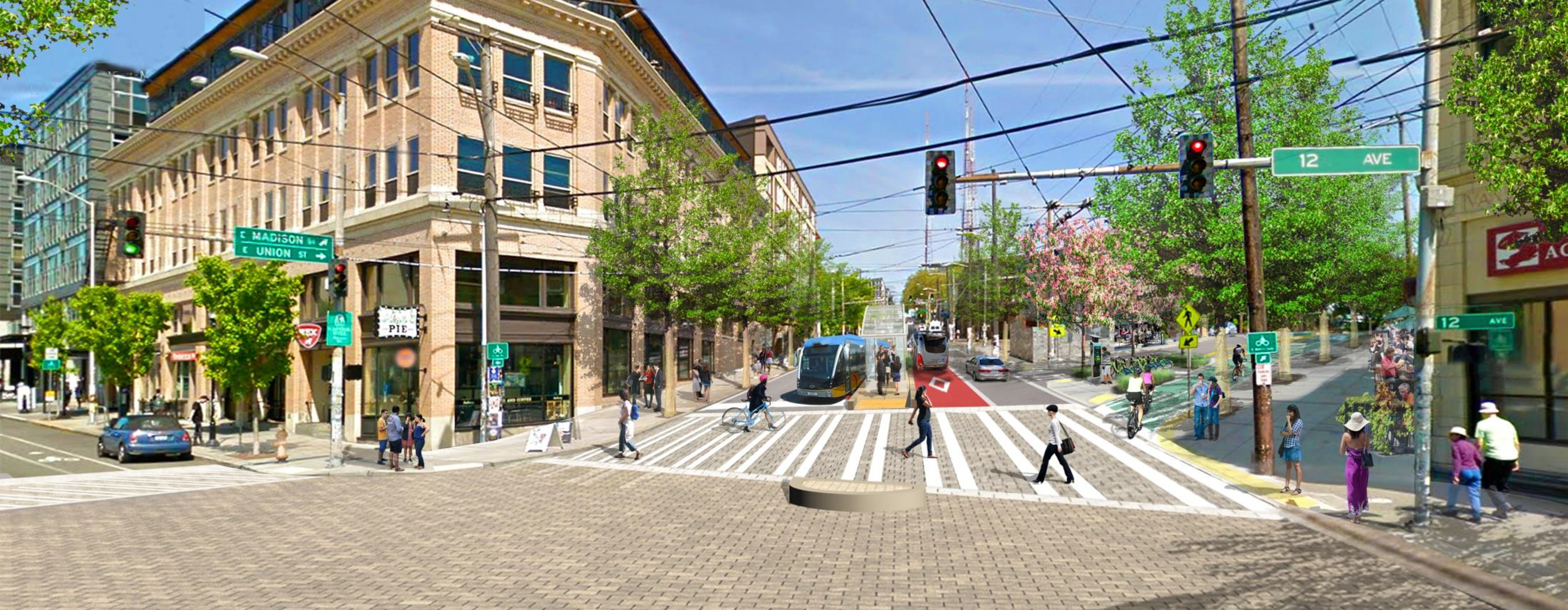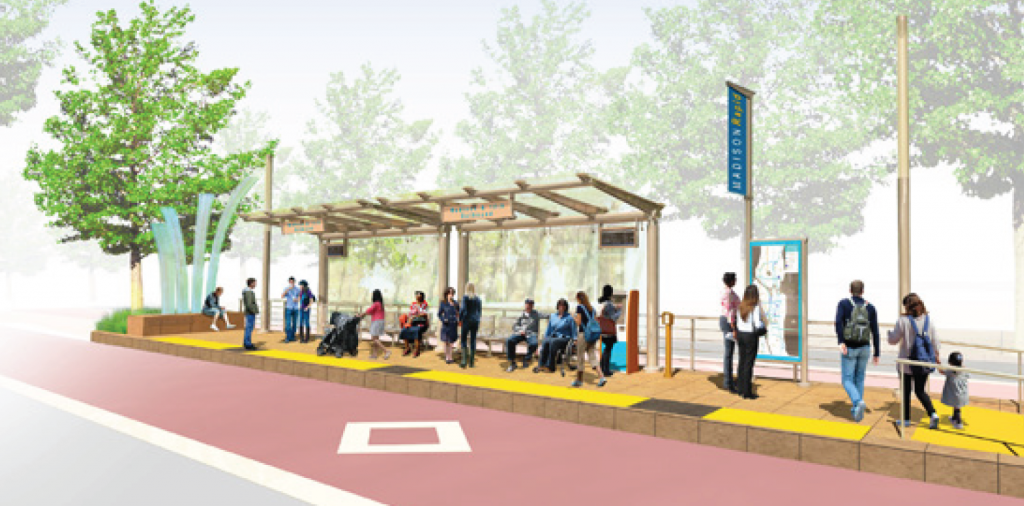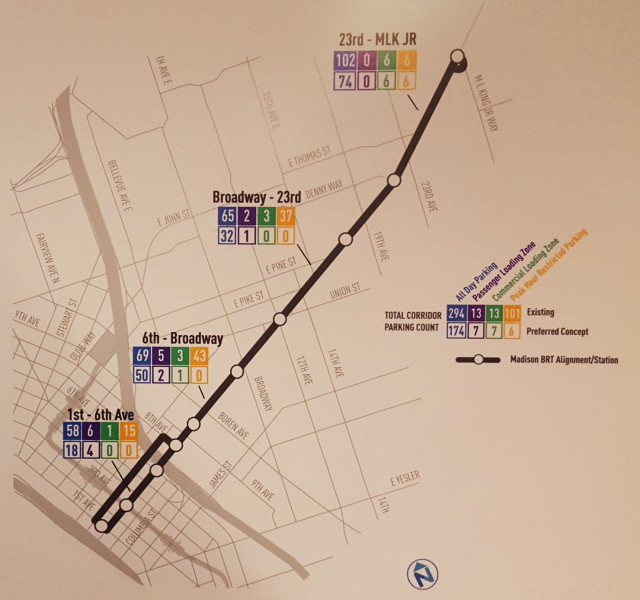
On Monday July 11th, a small meeting was held at Skyline on First Hill to discuss the current state of the Madison RapidRide+ project. As project design has now reached 30%, there were more details than before and the presenters were able to cover more about the design and funding of the project.
As has been covered before the project is set to have BAT (Business Access Transit) lanes in the downtown core, exclusive transit lanes through First Hill and mixed traffic lanes through the rest of the project. The reason given for mixed lanes past First Hill continues to be SDOT’s assertion that preserving parking through the corridor is more important than the speed benefits that would be provided past First Hill along Madison Street.
The absence of BAT lines could be in part to due to the advocacy of the folks living along the line: the areas that are getting exclusive lanes seem to have folks actively advocating for exclusive lanes, whereas the sections that favor parking seem to have had communities that asked SDOT to give priority to parking over transit lanes.

Additional bus features of this project are all off board payment, high quality bus shelters and audio announcements for when the next bus will arrive. The buses for this system will also be a special electric bus with doors on both sides for ease of use on either curb lanes or center lanes.
The project is currently set to cost $120 million dollars. Of this, $15 million has been secured from the Move Seattle levy and an additional $4 million has been secured from a Washington State mobility grant. The remaining funding is expected to come from this year’s Sound Transit 3 package (if passed) and federal grants.
Construction is expected run roughly through 2018 and 2019 with service starting soon after. Unlike the 23rd corridor paving project, SDOT has begun early outreach for this project to stakeholders such as local businesses and the hospitals to help schedule construction when it will be least disruptive for individuals who live and work along Madison Street. The lessons that were learned from the 23rd Street project were sited frequently as the motivation to do this increased outreach with the Madison Street project.
In addition to the transit improvements, a number of sidewalk and bicycle improvements are expected for this project. During the presentation, the intersection of 14th, Union, and Madison as well as Broadway and Madison were called out specifically as having targeted improvements. The complicated intersection of 14th, Union and Madison specifically might see widened sidewalks, a parklet in the pedestrian triangle and the conversion of the stretch of Union there into a cycle track.

The specific details of how the bicycle and sidewalk treatments will be handled are subject to public feedback next month at three planned open houses:
- August 3rd 5 – 7 p.m. at Seattle University, Campion Ballroom, 914 E Jefferson St.
- August 4th 11 a.m. – 1 p.m. Town Hall Seattle, Downstairs, 1119 8th Ave.
- August 9th 5 – 7 p.m. Meredith Mathews East Madison YMCA, 1700 23rd Ave.
Those who would like to have a voice in how this project is shaped (including potentially protected bike lanes that could connect from Union to the Broadway protected bike lane) are encouraged to attend if they can. There will also be a website announced soon to allow folks who can’t attend to provide public comment.
*Note, The Urbanist will reserve the bus rapid transit (BRT) label for projects actually likely to meet BRT standards. That said, projects like Madison RapidRide+ that flirt with BRT status but don’t quite get there due to punting on dedicated lanes throughout can still deliver big benefits to users.

Charles Bond
Charles is an avid cyclist that uses his bike as his primary mode of transportation. He grew up in the Puget Sound, but is currently overseas living in Japan. He covers a range of topics like cycling, transit, and land use. His time in Tokyo really opened his eyes to what urbanism offers people and has a strong desire to see growth happen in Seattle.
